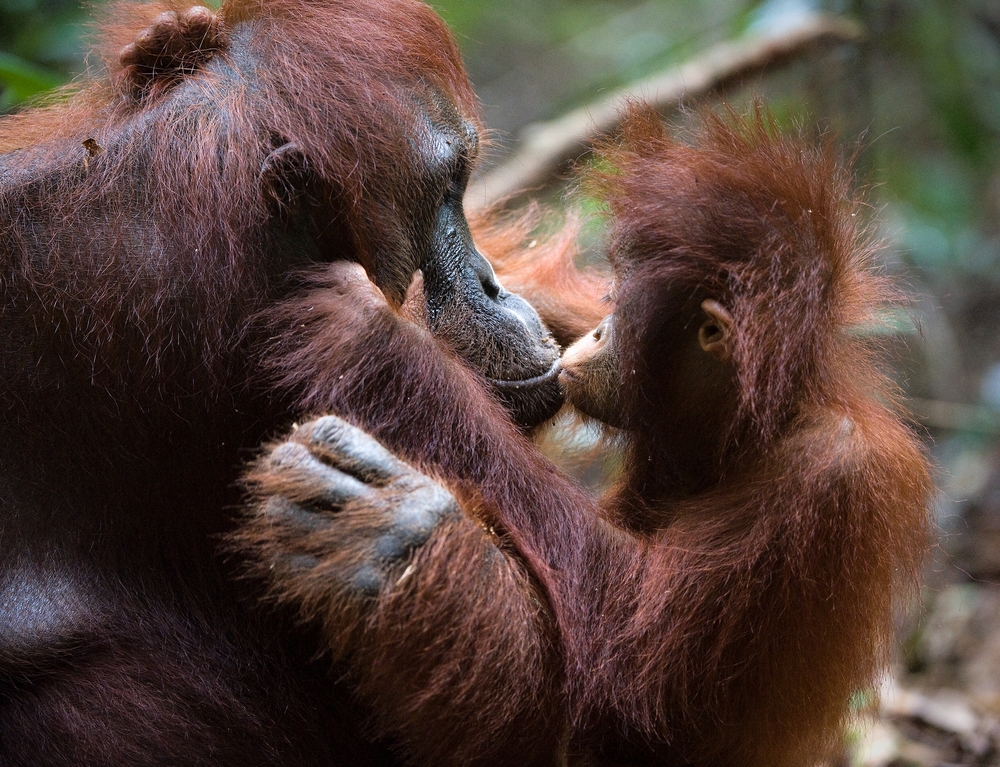Undiscovered Argentina
September 1, 2025

As one of the world’s most endangered animals, seeing an orangutan in the wild is an absolute privilege. These flame-haired apes used to roam throughout Southeast Asia, but their populations are now confined to small pockets of rainforest on the islands of Borneo and Sumatra in Malaysia and Indonesia. Iain Mallory was lucky enough to meet the orangutans at Camp Leakey in Borneo, and learn the ways of these characterful creatures. This is his firsthand account of a once-in-a-lifetime experience.
Even before our group arrived at Camp Leakey, in Kalimantan, Borneo we’d seen several orangutans, including a couple of wild primates feeding among the thick foliage which lines the Sekonyer River. However, there was little to prepare us for the greeting we received as the wooden klotoks, moored at the quayside of the camp. A family of orangutans were there to welcome us, a mother, with her youngest and an adolescent still clinging to the ape(ron) strings of its mother.

They seemed happy to hang around, almost reveling in the limelight as our small group maneuvered for the best position to photograph them, some attempting to manage a selfie with a charismatic ape. None of the trio seemed to mind, taking it all in their stride, meandering slowly along the path, almost dawdling as if enjoying the contact with their adoring fans.
Known as the ‘people of the forest’, each orange-colored ape had its own distinct character; unsurprisingly the youngest was the attention-seeker, climbing over branches and its mother, ensuring it wasn’t overshadowed by its more subdued sibling. Mum was patient, the perfect parent, watching her youngest charge through soulful, almost sad eyes, keeping him/her from any harm.
The rangers also did their bit, one was in constant and vigilant contact with the orangutans, ensuring the most exuberant, sometimes over-eager selfie-taking group members were respectful of the apes, and retaining a sufficient distance. If they felt we came close to interfering or weren’t heeding their warnings, they weren’t averse to issuing further, more abruptly phrased warnings. I appreciated witnessing this, gratified that the rangers did appear to have the best interests of the primates at heart.
Camp Leakey is located in Tanjung Puting National Park, on the banks of the Sekonyer River, and is a research facility and rescue center for ex-captive orangutans. It was founded by paleo-anthropologist Louis Leakey, who was a mentor to both Diane Fossey and Jane Goodall. During the day, the camp welcomes dozens of permit-holding visitors, enabling them to observe the apes from a safe distance.

Although the orangutans are the main attraction of Tanjung Puting, there is plenty more to see from the deck of a cruising klotok. The guides maintain a vigilant watch, allowing the guests to relax, but it still pays to remain observant. There is a certain kudos to being the first to spot a skulking creature or event of interest.
The best times for wildlife-spotting are early morning or as dusk begins to set in. Proboscis monkeys can usually be seen in the highest branches of the riverside trees, and the eagle-eyed may be fortunate enough to spot an impressive hornbill. Crocodiles lazily cruise among the roots of the trees growing along the river, waiting to ambush any prey unwise enough to stray too close.
The luckiest passengers may even see the gymnasts of the primate family, a gibbon, or possibly a wild orangutan. The initial tell-tale sign is the rustling of huge palm-like leaves, sometimes the whole tree shaking, before the first glimpse of red-brown hair is seen. The orangutan comes into view, before usually swinging away, no doubt slightly indignant at being rudely interrupted during breakfast.
A steady stream of klotoks and smaller powered boats plough through the deep waters of the Sekonyer, the Dayak people earning a living from the arterial river system. The boats ferry and taxi visitors or transport goods to and from the camps, while other small boats can be seen parked, their occupants fishing or mining for gold.

Sleeping on a klotok under a star-filled sky and waking up to an impressive Indonesian sunrise are two of life’s highlights – further reasons why visiting the orangutans of Camp Leakey is a bucket-list trip for most travelers. Spending time in the presence of these endangered, charismatic, and often magnificent apes should be a must for any nature-loving traveler.
Borneo is a large island shared between Malaysia, Indonesia, and the tiny nation of Brunei. Hot and humid it is cloaked in rainforest and fringed by tropical waters. The larger southern portion is part of Indonesia (Kalimantan) and is the less-visited side of the island. Travel here takes a little more time than in the north as there’s less infrastructure. The dense forest is usually infiltrated by boats along jungle waterways. Kalimantan is where you’ll find Camp Leakey, not too far from the coast in the protected jungles of the southwest.
In the north, the states of Sarawak and Sabah make up the Malaysian portion of Borneo. The rainforest is more easily accessible on this side of the island, and it’s busier because of this. Diving is also popular here, especially off of the islands in the northeast.
Heat and humidity come as standard in Borneo, so be prepared to take things slowly. The thermometer usually hovers at around 86 degrees Fahrenheit, and heavy rain deluges give everything a regular soaking. The best time to visit Borneo, particularly for seeing its wildlife, is during the drier months from April to September. Rain showers start to become more frequent from October, with heavy monsoon rains in December and January, easing off again into February and March.

Chat with a local expert today and start planning your Borneo adventure in search of orangutans and other tropical wildlife.
Explore all featured destinations
Join our mailing list for travel inspiration, trip recommendations, and insights from our local experts.